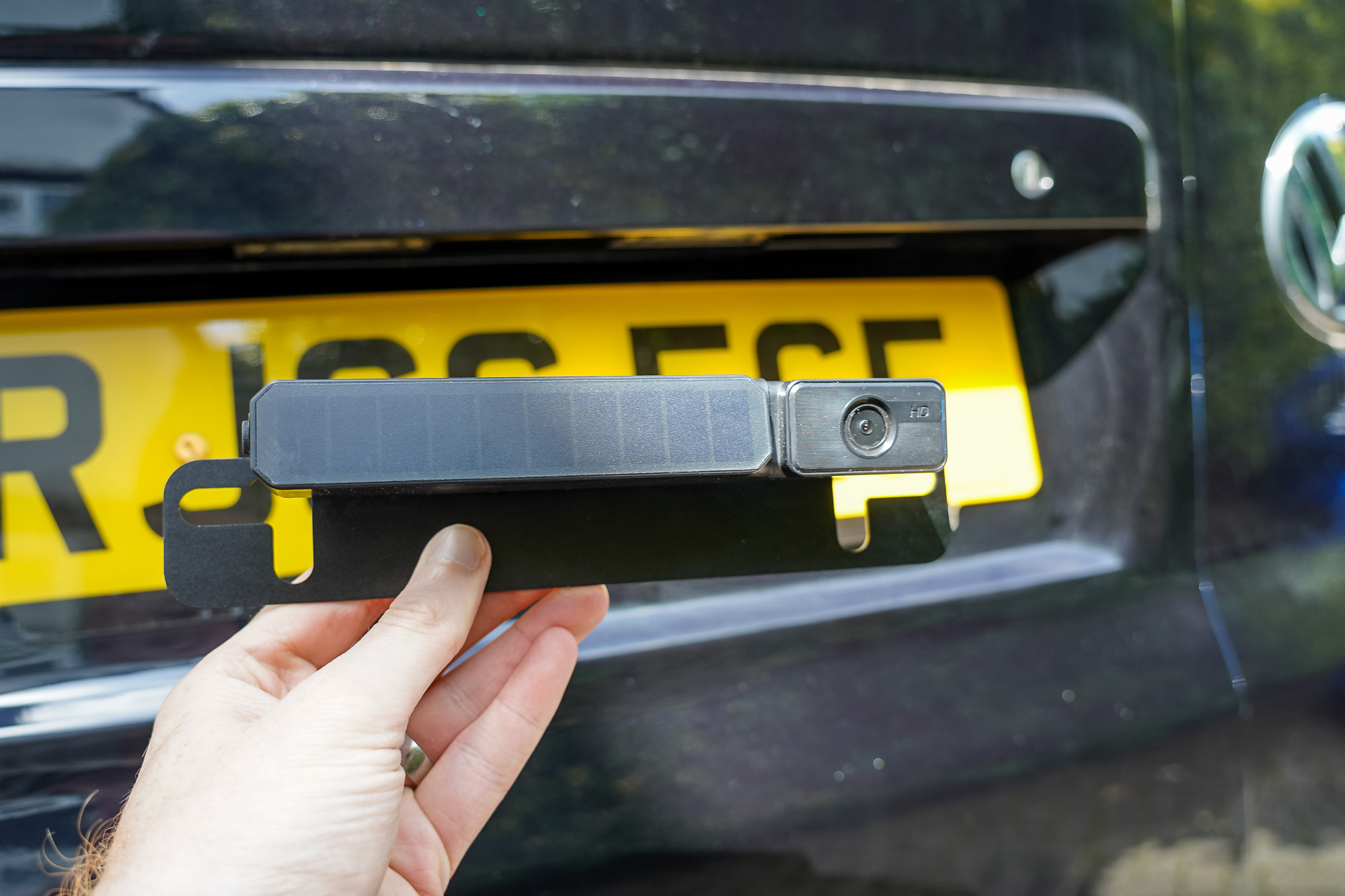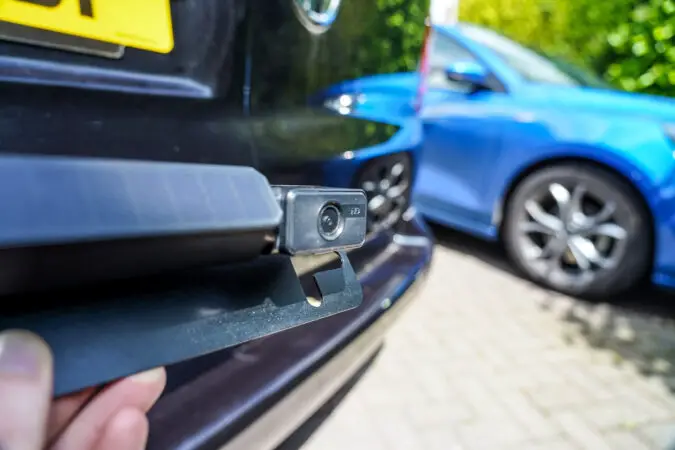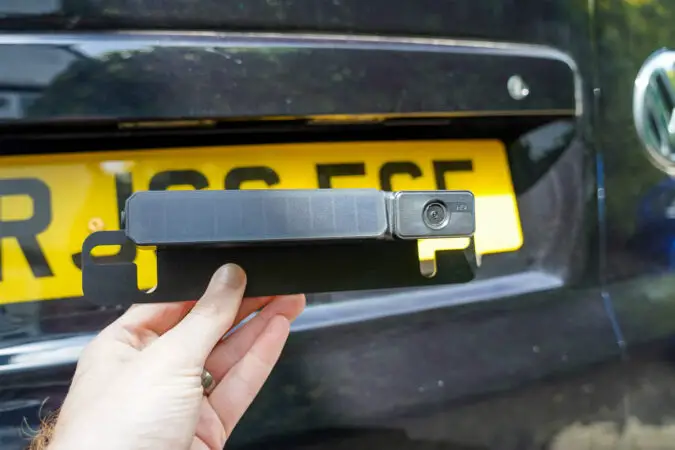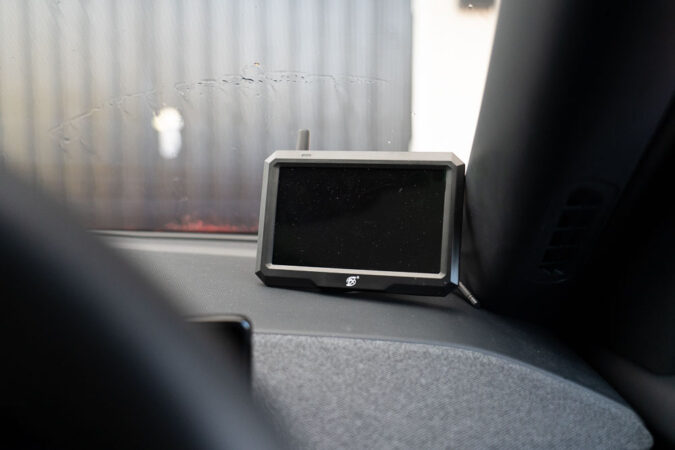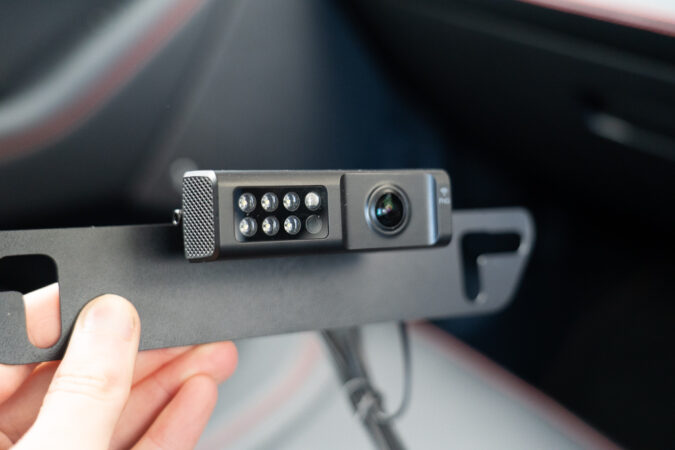Because they enable you to observe what is behind your car without necessarily turning around, backup cameras are growing in popularity. But how much to install back up camera?
Most automobiles and trucks can allow you to easily and inexpensively install backup cameras. Lives can be saved by installing a rearview camera in your car. It will not only improve the driver’s vision, but it will also make it easier to see things in blind zones.
We’ll break down the price of backup camera installation for you in this article. We’ll also go through a few variables that will impact backup camera installation costs and other reasons. Let’s begin immediately!
- Backup Camera
- Backup Camera Installation
- Best Backup Camera
- Backup Camera Cost
- Frequently Asked Questions
Backup Camera
If the backup camera, also known as a rearview camera, isn’t already in your car, it probably will be in the next car you buy. Rearview monitoring technology was a requirement as of May 2018 under federal law for all new passenger cars, vans, and other cars weighing just under 10,000 pounds. And in most cases, that refers to video cameras installed on the back.
For over a century, rearview mirrors were a necessary element of auto equipment. A wide-angle perspective and the inability to see what is directly behind the vehicle underneath the rear window are two big limitations of mirrors, despite how helpful they are.
Recent government statistics show that these flaws cause roughly 210 fatalities and 15,000 annual injuries from crashes from the back involving light vehicles.
Sadly, 31% of the fatalities include kids under 5 years. Additionally, the figures don’t even begin to include cases where a vehicle rear-ends an object or runs over more than a bicycle, toy, or other objects.
Benefits Of Reverse Cameras
The obvious advantage of a back camera is it increases your field of vision, especially underneath the back window and trunk level, to help prevent injury-causing and potentially catastrophic backover collisions.
Additionally, cameras enable you to see farther beyond the breadth of a mirror’s picture, removing blind spots. But cameras also have a variety of other advantages together with aiding in the protection of people or property behind a vehicle.
Backup cameras, for instance, can make parking easier and safer. Rear-facing cameras provide the driver with a considerably crisper and more precise picture of the objects behind the vehicle, and the majority of backup systems have a tone that sounds when you are approaching an object too closely.
Almost every backup cameras have two parallel lines on the screen that serve as guidelines, making it easier to enter or exit parking spaces.
Some additionally have a center line that might assist you in keeping the car centered in the area. As you approach a barrier, the system can alter the colors of guidelines between green to yellow and then to red thanks to modern color displays.
And that can be highly helpful in avoiding backover accidents when accompanied by an aural warning from rear-facing sensors.
A backup camera might be especially useful if you haul a trailer. As you align the trailer with the hitch on your car, the camera provides you with a close-up view while the line color and auditory sensors maintain track of the distance.
How Reverse Cameras Operate
The concept is straightforward on the surface: When you shift into reverse, a camera positioned at the back of the car activates and sends a picture to a screen to display what is behind you.
But the truth is a little more nuanced. Even at the most basic, backup camera systems are fairly complex technological devices, and they continue to advance in sophistication.
The complexity starts with the picture that the camera takes. Backup camera systems are intended to send a replica image to a monitor so that the orientation is right when you take a look, rather than delivering the image that a regular camera could observe.
If you were viewing the camera’s direct feed, the image could be inverted, causing you to steer to the left when you were meant to turn right. In order to make sense of the image on the display, the system is built to fix this.
The rear trim components of the vehicle typically have backup cameras installed by the manufacturer. You might find them concealed in the bumper, close to the license plate, or even in the tailgate of the SUV or pickup truck.
Camera Direction
However, because they are rather subtle, they can be a little difficult to spot. For the best view directly behind your automobile, the cameras are typically pointed downward.
They also include wide-angle lenses, giving you a more thorough vision than a rearview mirror would.
Although they can be placed anyplace in the driver’s line of sight, monitors are typically found in the cockpit’s center. Since most modern vehicles already have a screen for an entertainment system, navigation, and other features, the backup camera system frequently uses that screen.
Other designs place the monitor where drivers are used to seeing when backing up (which is handy if you’re learning how to backup a trailer) by using a piece of the rearview mirror as a monitor. However, compared to a monitor with a larger screen, this type is smaller and offers a less detailed image.
Backup Camera Installation
Here are the materials you’ll need to complete the task:
- Tool Chart
- Philips screwdriver
- Tool for Phillips screws
- Trim/panel removal equipment
- Wire cutters
- Portable drill
- Drill bit, 3/32 to 1/8
- Vehicle Multimeter
- Connectors for wires like Posi-Taps
- Electronic tape
- Snap ties
- Parts Chart
- Back-up camera
- Wire group
- Observer or entertainment system (if necessary)
- Elastic grommet
- Posi-Taps
- Posi-Taps and the main LED
How Much To Install Back Up Camera, Installation Step 1 – Putting Up A Backup Camera
- Take the Camera.
- Ensure that the car is off.
- Disconnect the battery terminals of the car safely.
- If required, take the license plate off.
- Set the camera up on the car in the desired location.
Mark the location where the camera’s cord meets the car with a marker.
You may need to dismantle an internal panel out from the interior part of a door, or tailgate based on the type of car and the location where the camera will be placed.
This may not be essential for a bumper.
Ensure there are no trim items, wiring, or cables that can damage if you make a hole out through the car’s body.
Find the drill bit size that creates a hole big enough for the wire plus the rubber grommet of the camera. Most of the time, all you require is a quick visual assessment.
Make a hole wherever you marked it using the chosen drill bit.
To cover the sharp metal edges and safeguard the wire, insert a rubber grommet through the hole. Through the opening, insert the camera wiring.
Use the included fasteners or hardware you bought separately to secure the camera on the car.
How Much To Install Back Up Camera, Installation Step 2 – Begin Installing The Wiring
- Join the camera wire to the given wire cluster. This will separate into a reverse signal wire, a video wire, and a power line.
- Try to link and channel the wiring alongside the manufacturer’s existing wiring loom for the neatest appearance.
- Locate the camera’s power source, which is probably reverse lighting or even a license plate light.
- Using a multimeter, determine the negative and positive wires coming from the light source. Connect the negative wire with the negative light wire and the positive wire of the camera with the positive light wire. You can use Posi-Tap connectors or splices for this.
How Much To Install Back Up Camera, Installation Step 3 – Connecting A Wire
- In the absence of Posi-Taps, you will have to splice the wires together. We advise a military splice because it is simple and doesn’t require soldering.
- Holding the positive light wire, strip a portion of the plastic cover with a wire stripper to expose the copper.
- Divide the copper strip in two after exposing the wires.
- Through the gap between the copper wires, insert the positive camera wire.
- To create a strong connection, wrap and then twist the positive camera wire all around the light wire.
- For security and protection, shrinkwrap or tape the connection. Likewise with the negative wire.
How Much To Install Back Up Camera, Installation Step 4 – Wire For Reverse Signal
- A signal alerting the system that the vehicle is reversing is necessary for the screen to display the video stream. The infotainment system may occasionally have automatic signal detecting built in that may recognize the existence of an inbound video signal. Skip this step if that’s the case.
- While the automobile is in reverse, locate a signal source by asking a friend to hold a wire that contains a positive 12 volts. Although some alternative stereo wiring straps have a built-in connection, people frequently use the wire for the reverse light.
- Use a splice to connect to the signal source (repeat the steps above).
- Prepare for routing by connecting the signal wire and the video wire.
How Much To Install Back Up Camera, Installation Step 5 – Routing The Wiring
- Choose if you want to follow the wire through the vehicle’s headliner or under the floor based on the kind of vehicle.
- To covertly run the wire, remove or partly disconnect the carpeting, trim pieces, headliner, or door rubber.
- Run the two wires toward the front of the car and tuck them away from view.
- The trim parts taken out should be reattached.
How Much To Install Back Up Camera, Installation Step 6 – Adding The Monitor
- It’s time to connect the monitor to video, power, and the signal wire once it has been installed, whether it’s in the dashboard, above it, or located in the rearview mirror.
- In some circumstances, a spliced-on adaptor allows the monitor power wire to be connected directly to the fuse box.
- Choose a suitable location and connect the power cable using a multimeter.
- To prevent the connection from draining the battery, ensure the fuse shuts off whenever the ignition is turned off. Other times, it is possible to connect the power wiring to the already stereo system.
- To access the stereo wire, remove the trim piece.
- Locate the stereo’s power cords.
- You will make both positive and negative connections.
- Connect the reverse signal and reverse trigger wires
- Wire the video together.
- The trim parts you take out should be reattached.
How Much To Install Back Up Camera – Final Steps
- Attach the battery terminals safely.
- Turn on the car.
- Check to check if the monitor activates or switches to the rear video feed display by shifting the car into reverse.
- If it functions, stop the car. If not, go back to the instructions and review your work.
- Use velcro, zip ties, and electrical tape to tidy up any extra wiring.
- If necessary, replace the audio head unit.
- Reinstall any interior panels, trim, or components in their proper places.
Congratulations, you’ve now fitted a backup camera to your vehicle.
Best Backup Camera
The best backup camera model for one individual could not be the right model for another. Reputable businesses produce a wide range of dependable backup cameras.
Auto-Vox is one of the best, the CS-2 Wireless Backup Camera, but our list also includes products from LeeKooLuu, eRapta, Yakry, and DoHonest, as well as other reputable manufacturers.
The finest rearview camera for you will rely on your individual requirements, but whichever model you choose, a device from one of the manufacturers we’ve featured won’t let you down.
1. Which Is Superior, Wired Or Wireless Backup Cameras
Both wired, as well as wireless cameras, have benefits and disadvantages.
Although wired cameras, where the camera is directly attached to a display or screen by a wire, are frequently more dependable and have better connections, they can be challenging to install and occasionally call for professional assistance.
Wireless cameras, which connect the camera and screen via a Wi-Fi signal, are simpler to install but may perform worse than wired models, particularly in bad weather. Which sort of camera best meets your needs is a decision only you can make.
2. What Resolution Works Best For Backup Cameras
The resolution of the screens on backup cameras varies from model to model, just like conventional screens on the phone or television. A backup camera in standard definition typically has a 720×480 pixel screen resolution.
3. What Qualities Should A Backup Camera Have
In the end, what you search for when buying a rearview camera will depend on what you value. If you’re worried about the quality of the camera feed, you can choose a camera connected with wires over a wireless or even smartphone camera.
Price and ease of installation may both be significant criteria, but they may be at odds with one another. For example, a difficult-to-install camera that requires expert installation. And if you are wondering how much to install back up camera, will cost significantly more.
Additionally, you should consider how your automobile is shaped and where the camera will be mounted (either on the license plate holder or somewhere else), as these aspects will eventually influence your decision.
Backup Camera Installation Cost
The price of a professional installation will vary depending on the manufacturer and model of the camera, the sophistication of the installation, and whether your car has wiring for the camera.
How much to install back up camera? The average cost of installation is between $75 and $200.
How Much To Install Back Up Camera, Consideration #1 – Cost Of Backup Cameras
The price of the backup camera itself is the first thing you need to take into account. These gadgets can cost anything from $30 for entry-level models to $500 with high-end variants.
The typical price of a wireless camera is $155, compared to a wired backup camera’s cost of about $80. You’ll need to spend about $200 to get a digital wireless rearview camera.
How Much To Install Back Up Camera, Consideration #2 – What A Camera Kit Costs
The kit’s price will vary according to the features it has. Just the camera as well as a wiring harness come with some packages. Other items include splitter boxes, brackets, and more. Expect to pay roughly $80 if you need all of the parts required for installation.
How Much To Install Back Up Camera, Consideration #3 – Additional Fees
Take into account the price of additional components such wires as well as cradles, and brackets for particular models, and whether any alterations are required. You’ll have to pay $30 to $40 for these materials in addition to installation labor.
Factors Affecting Backup Camera Installation Cost
You must take into account a number of considerations when budgeting on how much to install back up camera.
1. Type Of Camera
The backup camera with the highest price tag is the one with a separate screen. Depending on your preferences, you can mount it inside your car or even outside on the license plate.
Since these cameras require more wiring as well as other components than cameras that work with your car’s existing display system, they are more expensive.
2. The Complexity Installation Process
Your car type will determine the installation procedure. For instance, installing a camera in a truck is simpler than, say, installing one in an RV because a truck contains fewer components that need wiring underneath its hood.
3. The Features Of The Backup Camera
Because they require additional hardware or software upgrades, additional powerful features will also impact how much to install back up camera. They might not be part of the entry-level models and might take longer to set up during installation.
For instance, a camera with infrared or night vision features will cost more than a basic device without these features. Additionally, how much to install back up camera will increase if you need your rearview camera to offer a variety of viewing angles.
4. Type Of Installation
Hardwired and wireless installations are the two main types. Wires must run via your car’s electrical system for a hardwired installation. It implies that you must pay someone to run things for you. You must also buy the parts required to finish the installation.
A receiver and a transmitter connect together in a wireless system. You can completely avoid wiring by taking this route.
5. Does Auto Insurance Cover The Cost Of Installation
When adding backup cameras, the majority of motor insurance companies don’t offer savings. They might, however, provide discounts on some other safety tools, such as sensors or alarms.
How To Install A Backup Camera Cheaply
You already understand the value of having a backup camera in your car, but the cost can give you pause, especially if you’re on a limited budget.
Invest In A Waterproof Backup Camera
Make sure the model you choose is water-resistant. As a result, water won’t harm it or have an impact on its functionality. Compared to conventional backup cameras, a waterproof camera would survive longer and function better.
Buying A Vehicle With A Backup Camera Already Installed
Consider purchasing a new vehicle with a built-in backup camera if you’re in the market. For instance, every trim level on the majority of new car models comes standard with an integrated backup camera.
Installing The Backup Camera
It’s simple to believe that having a backup camera done by a professional in your car or truck is vital, but this isn’t always the case. If it’s a simple item that doesn’t require wiring or specialized equipment, doing it yourself can save you money.
Before purchasing any equipment, make sure your car has enough space for putting it. Nothing is harmed during installation in this manner.
Frequently Asked Questions
Are Backup Cameras Required
Human error may also be a factor in these unfortunate incidents, just like in the instance of hot automobile fatalities. Although rearview cameras may be required, their use is not. In fact, according to Edmunds, the research found that 20% of drivers used their backup cameras while reversing.
What Year Did Backup Cameras Become Standard
After several years of delays, the NHTSA finally imposed in 2014 a requirement that all light vehicles have backup cameras by May 1, 2018.
Can You Use Your Backup Camera Driving Test
Since the majority turn on automatically, a reverse camera can technically be used in a driving test. However, you cannot use your main line of sight as a backup camera. While reversing, you must still employ the antiquated technique of checking the mirrors and peering out the back window.

